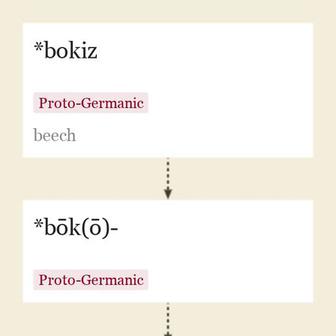facebook n.
directory listing names and headshots, by 1983, originally among U.S. college students, from face (n.) + book (n.). The social networking Web site of that name (with capital F-) dates from 2004.
Entries linking to facebook
c. 1300, "
Replaced Old English andwlita "
From late 14c. as "
Whan she cometh hoom, she raumpeth in my face And crieth 'false coward.' [Chaucer, "Monk's Tale"]
Face to face is from mid-14c. Face time is attested from 1990. To lose face "
Two fases in a hode is neuer to tryst. ["Awake lordes," 1460]

Middle English bok, from Old English boc "
Latin and Sanskrit also have words for "
The sense gradually narrowed by early Middle English to "
The use of books or written charters was introduced in Anglo-Saxon times by the ecclesiastics, as affording more permanent and satisfactory evidence of a grant or conveyance of land than the symbolical or actual delivery of possession before witnesses, which was the method then in vogue. [Century Dictionary]
From c. 1200 as "
updated on October 08, 2014